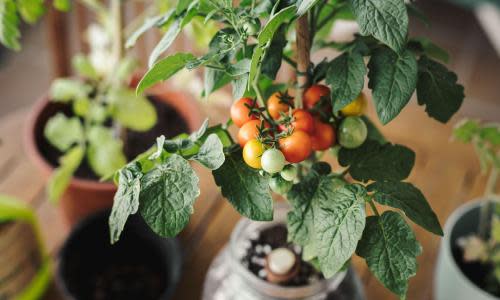Plants emit ultrasonic sounds in rapid bursts when stressed, scientists say

There comes a time in a plant’s life when the head sags, the leaves go pale and the body releases a barrage of sounds that are the ultrasonic equivalent of stamping on bubble wrap.
While any gardener is familiar with the wilting and discoloration that comes with drought, a shortage of water or a sudden wound can also prompt plants to produce staccato pops, which nearby creatures may respond to, scientists say.
The discovery, described as “exciting and thought-provoking” by one independent expert, suggests the plant kingdom is not as silent as it seems, and that ultrasonic sounds emitted from plants might even help shape their ecosystems.
“When these plants are in good shape, they produce less than one sound per hour, but when stressed they emit many more, sometimes 30 to 50 per hour,” said Prof Lilach Hadany, an evolutionary biologist and theoretician at Tel Aviv University.
“They are potentially important because other organisms could have evolved to hear these sounds and interpret them,” she added. “We are now testing both animals and plants to see if they respond.”
Hadany and her colleagues recorded sounds produced by tomato and tobacco plants raised in greenhouses. Healthy plants emitted clicks and pops, but the sounds came in far more rapid bursts when the plants were deprived of water or had their stems cut. The noises could be picked up 3-5 metres away.
Related: If plants are so intelligent, should we stop eating them? | Emma Beddington
At 40 to 80kHz, the sounds are too high-pitched for the human ear, which has an upper range of about 20kHz. But insects such as moths and small mammals including mice can detect such frequencies, raising the prospect that the noises might influence their behaviour.
Writing in Cell, the scientists describe how the plants’ sounds are as loud as human speech and are emitted more frequently after two days without water. The pops peak at day five or six and then subside as the plant dries up.
On recording the sounds, the researchers trained an artificial intelligence algorithm to identify the plant and the cause of its stress from the popping noise alone. It was not 100% accurate, but demonstrates that the sounds contain information that might be useful to organisms in the environment, they say.
There is no evidence the sounds are an attempt to communicate, any more than a log declares distress by crackling on a fire. But Hadany said the sounds might nonetheless be useful for nearby creatures, perhaps affecting which plants animals feed on or where insects lay their eggs. It is unclear what creates the sounds, but the authors suspect a process called cavitation, where water columns in dehydrated plant stems break down, generating air bubbles.
Whether or not anything is listening to the sounds, Hadany says the discovery could make irrigation more efficient by using microphones alongside other sensors to detect when plants are short on water.
“This is exciting and thought-provoking: plants that are vocal about their stress level – who’d have thought,” said Marc Holderied, a professor of sensory biology at Bristol University. “While this appears to be a byproduct of physiological stress rather than intentional communication, nothing can stop nearby organisms from trying to exploit that information.”
“Nobody has yet discovered an ear in a plant, but plants sure respond to many mechanical stimuli, so scientists might want to look for ultrasound detectors in such plants,” he added.
In 2017, Carlos Vicient, a researcher at the Centre for Research in Agricultural Genomics in Barcelona, reported that playing loud sounds to plants for hours made them more resistant to drought. But he is sceptical that they would respond to quieter sounds in a noisy natural environment. “It seems much more probable that if such communication exists, it is carried out through the emission of volatile substances,” he said.
“The fact that a plant emits sounds does not mean that it is communicating with its congeners,” he added. “Any system of pipes that transports a fluid generates sounds and that does not mean that a water pipe is trying to communicate with anyone.”

 Yahoo News
Yahoo News 